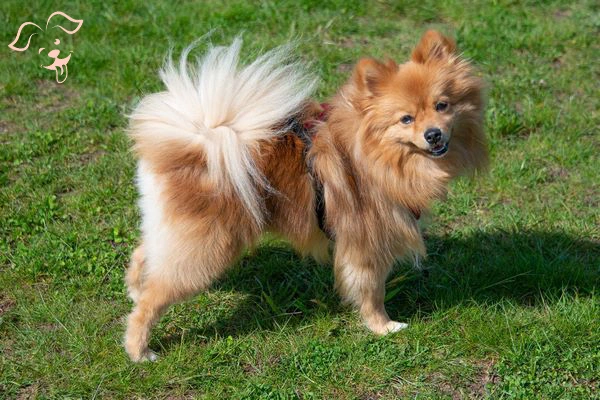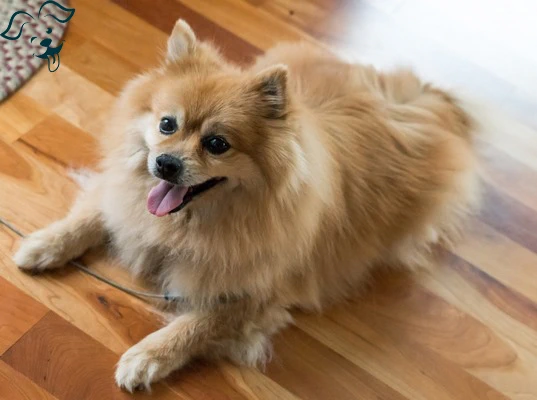CARING WITH FAMILY
|
| The level of affection a breed is likely to exhibit towards family members and familiar individuals varies. Certain breeds may display aloofness towards everyone except their owner while other breeds tend to treat everyone they know as their closest friends. |
LOVE WITH CHILDREN
Unwise
Good With Children
|
| The level of tolerance and patience a breed exhibits towards children's behavior along with its overall family-friendly nature is an important consideration. It is crucial to always supervise dogs when they are around young children or children of any age who have limited exposure to dogs. |
BEHAVIOR WITH DOGS
Unwise
Good With Other Dogs
|
| The level of general friendliness a breed displays towards other dogs can vary. While it is essential to always supervise interactions and introductions between dogs certain breeds have a higher likelihood of getting along well with other dogs both within their home environment and in public settings. |
SHEDDING LEVELS & MANAGEMENT
No Shedding
Hair Everywhere
|
| The amount of fur and hair a breed typically sheds is an important factor to consider. Breeds with high shedding tendencies will require more frequent brushing to manage the excess hair effectively. It's worth noting that these breeds are more likely to trigger allergies in individual’s sensitive to pet dander. |
COAT GROOMING STANDARDS
|
| The frequency of bathing, brushing, trimming, and other forms of coat maintenance can vary between breeds. It's important to consider your available time, patience and budget when evaluating the grooming requirements of a particular breed. Regular nail trimming is necessary for all breeds. Some breeds may require frequent bathing, while others can go for longer periods without needing a bath. Factors such as the dog's lifestyle, coat type and activity level can influence the recommended bathing schedule. Regular brushing is usually necessary to prevent mats, tangles and excessive shedding. Long-haired breeds typically require more frequent brushing to maintain their coat's health and appearance. |
DROOLING INTENSITY
Less Likely to Drool
Always Have a Towel
|
| Considering how drool-prone a breed tends to be is important, particularly if you prioritize cleanliness. If you're someone who prefers a tidy environment and dislikes having ropes of slobber on your arm or large wet spots on your clothes breeds that are known to drool excessively may not be the most suitable choice for you. |
COAT STYLES GUIDE |
| Double |
| COAT SPECTRUM |
| Long |
FRIENDLINESS
Reserved
Everyone Is My Best Friend
|
| Considering how welcoming a breed tends to be towards strangers is an important factor when choosing a dog. It's important to note that different breeds have varying temperaments and behaviors when it comes to interacting with unfamiliar people. Certain breeds may be more reserved or cautious around strangers regardless of the location or situation. They may exhibit a natural instinct to be wary or protective, which can sometimes be mistaken as unfriendliness. These breeds may take some time to warm up and feel comfortable with new individuals. |
LIVELINESS
Only When You Want To Play
Non-Stop
|
| Considering a breed's inclination for playfulness, even beyond the age of puppyhood, is an important aspect when choosing a dog. Different breeds have varying levels of enthusiasm for play and interaction. Certain breeds tend to maintain their playful nature well into adulthood. They may continue to enjoy engaging in activities like tug-of-war, fetch or other interactive games for years. These breeds have a high energy level and typically require mental and physical stimulation through play to remain content. |
VIGILANCE INTENSITY
What's Mine Is Yours
Vigilant
|
| Considering a breed's tendency to alert you when strangers are nearby is an important aspect to consider when selecting a dog. Some breeds are naturally more vigilant and reactive to potential threats, whether it's the mailman or even a squirrel outside the window. These breeds have a strong instinct to alert their owners when they detect any perceived danger or unfamiliar presence. These alert breeds are likely to exhibit behaviors such as barking, growling or becoming more attentive when they sense strangers in their vicinity. Their keen awareness and protective instincts make them excel at being watchdogs. |
ADAPTATION CAPACITY
Lives For Routine
Highly Adaptable
|
| Considering a breed's adaptability to change is an important aspect to consider when choosing a dog. Some breeds are naturally more flexible and adaptable to changes in living conditions, noise levels, weather, daily schedules and other variations in day-to-day life, while others may be more sensitive or resistant to change. Breeds that are known for their adaptability tend to be more resilient and able to adjust to different environments making them more suitable for individuals or families who anticipate frequent changes. These breeds can handle new living conditions such as moving to a new home with relative ease. They are also often more tolerant of changes in noise levels or disruptions in their routine. |
OBEDIENCE LEVEL
Self-Willed
Eager to Please
|
| Considering a breed's trainability and willingness to learn new things is crucial when choosing a dog. Different breeds exhibit varying levels of ease when it comes to training and their inclination to follow commands. Certain breeds are known for their high trainability and eagerness to please their owners. They are often quick to grasp new concepts and enjoy the training process. These breeds are motivated by making their owners proud and are usually more responsive to training techniques making the training experience smooth and rewarding for both the dog and owner. |
STAMINA LEVEL
|
| Considering the amount of exercise and mental stimulation a breed requires is essential when choosing a dog. Different breeds have varying levels of energy, and understanding their needs can help ensure a harmonious match with your lifestyle and preferences. High-energy breeds are typically ready for action and eagerly seek their next adventure. They thrive on activities that engage their physical and mental abilities, such as running, jumping, and playing. These breeds benefit from regular exercise and mental stimulation to expend their energy and prevent boredom-related behaviors. Keeping them active throughout the day is crucial to their well-being and overall satisfaction. |
VOCALIZATION
|
| Likes To Be Vocal |
LEARNING CURIOSITY LEVEL
Happy to Lounge
Needs a Job or Activity
|
| Providing appropriate mental stimulation for these breeds is essential in order to maintain their mental health and prevent boredom-related issues. This can be achieved through various means, including puzzle toys, interactive games, obedience training, scent work or engaging in specific tasks suited to their breed's abilities and instincts. |
| COLORS |
|
Description
|
Registration Code
|
|
Blue Merle
|
050
|
|
Blue Brindle
|
056
|
|
Chocolate Merle
|
496
|
|
Blue Sable
|
481
|
|
Black
|
007
|
|
Black & Tan
|
018
|
|
Blue
|
037
|
|
Blue & Tan
|
044
|
|
Chocolate
|
071
|
|
Chocolate & Tan
|
072
|
|
Cream
|
076
|
|
Cream Sable
|
348
|
|
Orange
|
133
|
|
Orange Sable
|
137
|
|
Red
|
140
|
|
Red Sable
|
155
|
|
Beaver
|
349
|
|
Brindle
|
057
|
|
Chocolate Sable
|
350
|
|
White
|
199
|
|
Wolf Sable
|
230
|
|
Beaver Sable
|
519
|
|
Tri-Colored
|
380
|
|
Black & Brindle
|
008
|
|
| PATTERNS |
|
Description
|
Registration Code
|
|
Parti-Color
|
038
|
|
Mask
|
128
|
|
White Markings
|
014
|
|
Tan Markings
|
012
|
|
Brindle
|
051
|
|
Irish Marked
|
115
|
|
Tri Color Markings
|
024
|
|
Sable
|
026
|
|
Merle Markings
|
035
|
|






























FRIENDLINESS
LIVELINESS
VIGILANCE INTENSITY
ADAPTATION CAPACITY